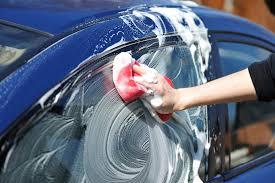Vehicle Washing

Car washing is a common routine for residents and a popular way for organizations, such as scout troops, schools and sports teams to raise funds. However, most of the time, cars are washed in driveways and parking lots which allow wash water (dirty water) to find its way to the nearest storm drain, ultimately draining into the Chesapeake Bay. The wash water often contains pollutants, such as oils and grease, phosphates (from the soap) and heavy metals—all of which are unhealthy for people and fish.
Washing Your Car Properly
- The best action is to take your vehicle to a commercial car wash, especially if you plan to clean the engine or the bottom of the car. Most car washes reuse water several times before sending it for treatment at a sewage treatment plant.
If you still want to wash your car at home:
- Wash your car on gravel, grass or another permeable surface, so the ground can filter the water naturally.
- Use soap sparingly. Try to use non-phosphate detergents. Phosphates are nutrients that can cause problems for nearby waterways.
- Use a hose that is high pressure, low volume. Use a hose with a nozzle that automatically turns off when left unattended or one that has a pistol grip or trigger nozzle to save water. Wash one section of the car at a time and rinse quickly.
- When you’re done, empty your bucket of soapy water down the sink, not the street.
- Block off the storm drain during charity car wash events or use an insert with a vacuum pump to catch wash water and empty it into the sink, not the street.
